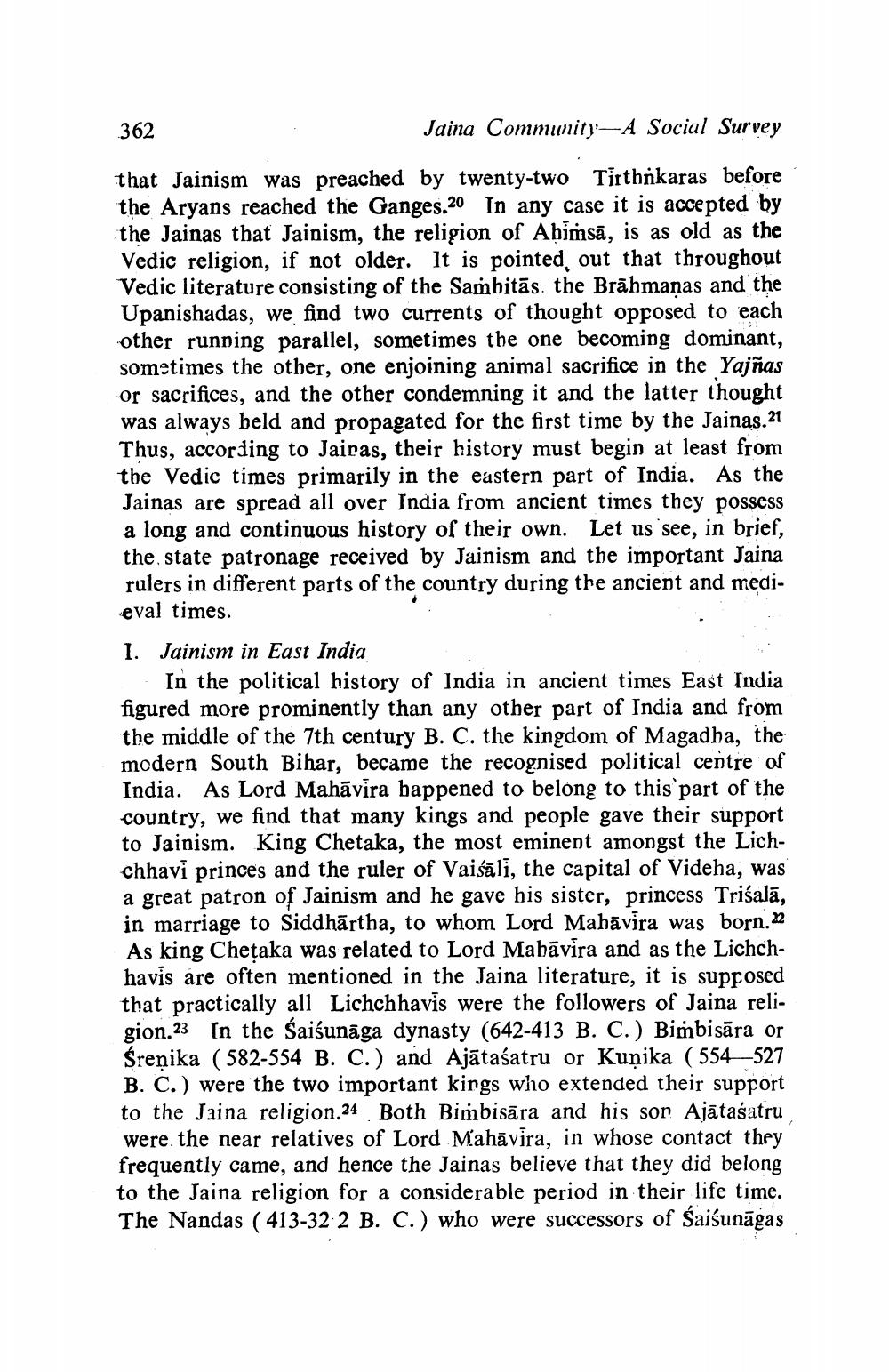________________
362
Jaina Community-A Social Survey
that Jainism was preached by twenty-two Tīrthñkaras before the Aryans reached the Ganges.20 In any case it is accepted by the Jainas that Jainism, the religion of Abjmsā, is as old as the Vedic religion, if not older. It is pointed out that throughout Vedic literature consisting of the Sambitās. the Brāhmaṇas and the Upanishadas, we find two currents of thought opposed to each other running parallel, sometimes the one becoming dominant, sometimes the other, one enjoining animal sacrifice in the Yajñas or sacrifices, and the other condemning it and the latter thought was always beld and propagated for the first time by the Jainas.21 Thus, according to Jairas, their history must begin at least from the Vedic times primarily in the eastern part of India. As the Jainas are spread all over India from ancient times they possess a long and continuous history of their own. Let us see, in brief, the state patronage received by Jainism and the important Jaina rulers in different parts of the country during the ancient and medieval times.
1. Jainism in East India
In the political history of India in ancient times East India figured more prominently than any other part of India and from the middle of the 7th century B. C. the kingdom of Magadha, the modern South Bihar, became the recognised political centre of India. As Lord Mahavira happened to belong to this part of the country, we find that many kings and people gave their support to Jainism. King Chetaka, the most eminent amongst the Lichchhavi princes and the ruler of Vaiśālī, the capital of Videha, was a great patron of Jainism and he gave his sister, princess Trišalā, in marriage to Siddhārtha, to whom Lord Mahāvira was born.22 As king Chetaka was related to Lord Mahāvira and as the Lichchhavis are often mentioned in the Jaina literature, it is supposed that practically all Lichchhavis were the followers of Jaina religion 23 In the Saisunāga dynasty (642-413 B. C.) Bimbisāra or Śreņika (582-554 B. C.) and Ajātasatru or Kuņika (554-527 B. C.) were the two important kings who extended their support to the Jaina religion.24 Both Bimbisāra and his son Ajātasatru were the near relatives of Lord Mahāvira, in whose contact they frequently came, and hence the Jainas believe that they did belong to the Jaina religion for a considerable period in their life time. The Nandas ( 413-32 2 B. C.) who were successors of Saiśunāgas




